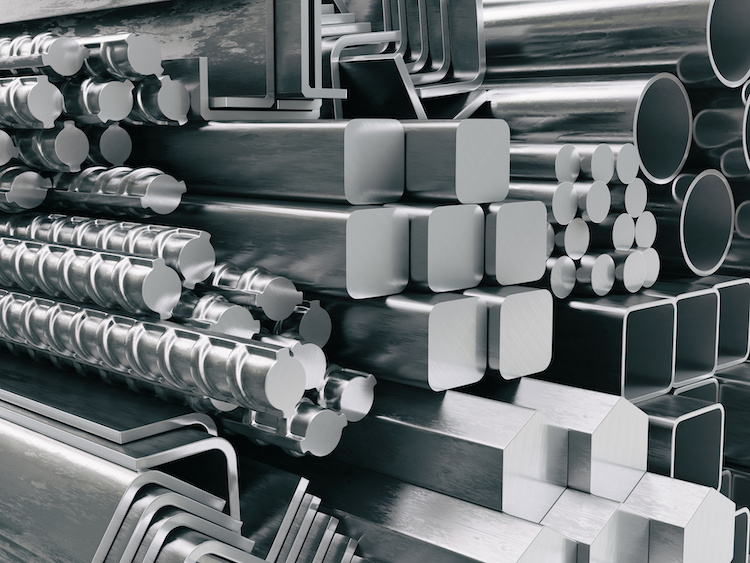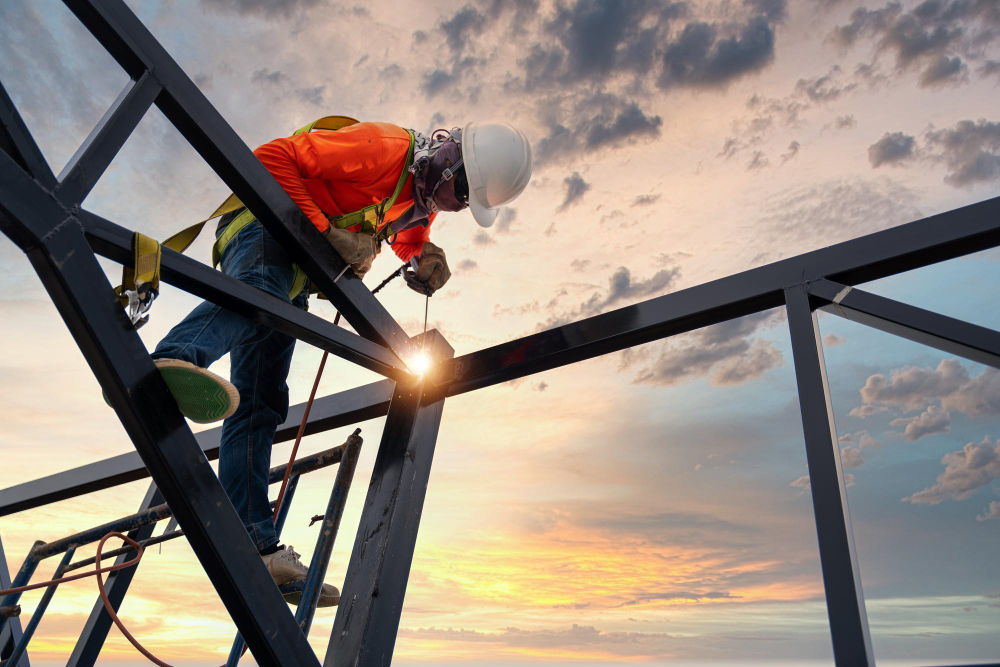Expert Steel Fabricators Melbourne: Top Quality You Can Trust Fund
Wiki Article
Comprehensive Analysis of Cutting-Edge Techniques in Steel Manufacture Market
As the steel construction sector proceeds to develop, the integration of innovative methods has actually become vital for remaining affordable and fulfilling the demands of contemporary manufacturing criteria. From laser reducing improvements to the application of robotics and 3D printing in steel manufacturing, the landscape of construction methods is quickly altering. With each advancement bringing its very own collection of advantages and obstacles, an extensive evaluation of these techniques is critical for firms aiming to simplify their processes, improve accuracy, and ultimately, raise the top quality of their steel fabrication outcome. In this vibrant industry where innovation plays a crucial role, understanding the subtleties of these cutting-edge techniques is not simply a choice yet a requirement for those wanting to advance in the ever-evolving world of steel fabrication.Laser Cutting Advancements
In the realm of steel fabrication, laser cutting advancements have revolutionized the precision and performance of metal shaping procedures. By taking advantage of the power of concentrated laser beam of lights, makers can now attain exceptional levels of precision when cutting with numerous sorts of steels. This innovation enables detailed designs to be implemented with minimal material waste, making it a cost-effective service for sectors calling for high precision elements.Among the vital advantages of laser cutting is its ability to handle a wide variety of products, consisting of stainless-steel, light weight aluminum, and carbon steel, with ease. The process produces tidy, burr-free edges, eliminating the requirement for additional ending up actions. The non-contact nature of laser cutting minimizes the risk of product contamination, resulting in greater quality end items.
Moreover, laser cutting devices can be programmed to make swift, specific cuts, substantially decreasing manufacturing time compared to typical reducing techniques. This rate and precision make laser reducing particularly suitable for mass manufacturing environments where effectiveness is paramount. As technology remains to advance, laser cutting is positioned to play an increasingly essential function in the steel construction industry.

CNC Machining Innovations
The development of CNC machining technologies has introduced a new era of precision and performance in the steel construction market. Computer System Numerical Control (CNC) makers have transformed steel fabrication by supplying unrivaled precision and repeatability in the production procedure. steel fixing. Among the vital innovations in CNC machining is the integration of sophisticated software application systems that allow real-time surveillance and adjustments, resulting in improved efficiency and high quality controlMoreover, the advancement of multi-axis CNC makers has enabled the construction of complex steel elements with elaborate designs that were previously testing to generate. These makers can do a wide variety of machining operations, including milling, exploration, transforming, and grinding, all with high degrees of precision.
Moreover, the incorporation of automation and robotics in CNC machining has structured manufacturing processes, reduced preparations, and lessened the margin of error. This integration of cutting-edge modern technologies not just increases efficiency yet likewise guarantees regular top quality across all fabricated steel components. To conclude, CNC machining innovations remain to drive innovations in the steel manufacture market, establishing brand-new standards for accuracy and productivity.
Automated Welding Technologies
Automated welding technologies have actually reinvented the steel construction industry, enhancing performance and precision in the welding process. These innovative technologies make use of computer-controlled systems to automate the welding process, causing higher productivity degrees and enhanced weld quality. Among the essential benefits of automated welding is the ability to execute complex welds with regular accuracy, lowering the possibility of mistakes and remodel.Robot welding systems are at the center of automated welding innovations, using unparalleled rate and precision. These systems can take care of a large range of welding jobs, from easy to complex, with ease (steel fixing). By making use of advanced sensors and software program, robot welders can adapt to variations in material and joint geometry, making sure an attire and reliable weld
Additionally, automated welding modern technologies boost workplace safety by reducing the direct exposure of human welders to harmful fumes and extreme warmth. As the steel fabrication industry remains to develop, integrating automated welding innovations will certainly be necessary for firms aiming to remain affordable and satisfy the expanding needs for top notch bonded items.
Robotics Integration in Fabrication
Utilizing robotic systems in fabrication processes has become a critical method for boosting performance and accuracy in contemporary manufacturing environments. Robotics integration in steel fabrication supplies a myriad of advantages, consisting of increased productivity, improved high quality control, and improved safety actions. These innovative robotic systems are geared up with sophisticated sensing units and programs capabilities, permitting them to perform detailed jobs with a high level of precision and repeatability.Among the crucial advantages of robotics assimilation in steel manufacture is the capability to automate repetitive jobs, such as product handling, reducing, welding, and assembly procedures. This not only speeds up manufacturing cycles but also reduces the risk of human mistake, bring about greater overall item high quality. In addition, robotics can operate 24/7, dramatically increasing production outcome and meeting limited project target dates.

3D Printing in Steel Production
Having transformed the steel manufacture sector through robotics combination, the expanding exploration of 3D printing in steel production is poised to further development the world of modern-day manufacturing techniques. 3D printing, also understood as additive production, supplies unprecedented design freedom and complexity, allowing the development of detailed steel frameworks that were formerly unattainable through traditional manufacturing methods. By utilizing computer-aided style (CAD) software program, suppliers can precisely control the layer-by-layer deposition of steel product, resulting in get rid of enhanced geometries and functionalities.One of the key advantages of 3D printing in steel production is its capacity to decrease material waste substantially. Unlike subtractive production procedures where excess material is trimmed away, 3D printing just makes use of the necessary quantity of steel needed for the last part. This efficiency not just leads to cost savings yet additionally straightens with lasting manufacturing methods by decreasing ecological effect.
Furthermore, 3D printing allows fast prototyping and modification, enabling the manufacturing of small sets of intricate steel elements with short preparations. As the innovation continues to mature and come to be much more available, its integration right into mainstream steel fabrication procedures is anticipated to drive innovation and performance throughout the industry.
Conclusion
Finally, the steel fabrication industry has seen significant innovations in techniques such as laser cutting, CNC machining, automated welding, robotics Alpha reo integration, and 3D printing. These advanced innovations have reinvented the way steel items are made, causing boosted cost-effectiveness, efficiency, and accuracy. Proceeded investment in these ingenious strategies is essential for the industry to stay affordable and satisfy the needs of modern manufacturing procedures.As the steel manufacture market continues to develop, the integration of cutting-edge strategies has actually become essential for remaining affordable and satisfying the demands of modern-day production standards.One of the key advantages of laser cutting is its capacity to manage a broad range of products, including stainless steel, aluminum, and carbon steel, with convenience.Automated welding innovations have changed the steel construction industry, boosting effectiveness and precision in the welding procedure.Having changed the steel construction industry with robotics integration, the expanding exploration of 3D printing in steel production is poised to further development the world of modern production strategies.In conclusion, the steel construction sector has actually seen significant improvements in strategies such as laser cutting, CNC machining, automated welding, robotics combination, and 3D printing.
Report this wiki page